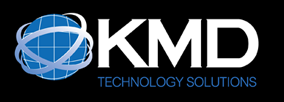Introduction: The Power of Predictability
Every project manager, operations leader, or team member has experienced the chaos that comes with inconsistent processes. Missed deadlines, unclear handoffs, lost files, and constant firefighting—these issues don’t just waste time, they cost companies real money.
The solution? Consistent, predictable workflow management.
When teams establish repeatable processes, work becomes smoother, faster, and more scalable. This doesn’t mean making processes rigid; it means creating clear structures that keep everyone aligned while allowing flexibility where needed.
In this post, we’ll explore the four key benefits of consistent workflows and how they help organizations boost efficiency, reduce errors, and scale effectively.
1. Consistency Eliminates Unnecessary Work and Surprises
🔁 Fewer surprises, fewer headaches.
Inconsistency leads to inefficiency. When every project follows a different structure, teams spend time figuring out next steps, chasing down files, and duplicating work. Instead of focusing on execution, they’re stuck navigating disorganization.
A consistent process eliminates these issues by:
✔ Providing a clear roadmap – Everyone knows the sequence of tasks
✔ Reducing errors and rework – Fewer miscommunications lead to smoother execution
✔ Making scaling easier – When every project follows a repeatable structure, new team members ramp up faster
Example: Imagine kicking off a project where all necessary files are automatically gathered, named, and stored in a shared location. No scrambling, no delays—just instant readiness.
💡 Key takeaway: A well-structured process doesn’t slow teams down; it frees them to work more effectively.
2. Visibility: If Teams Can’t See the Work, They Can’t Trust It
👀 Lack of visibility causes delays, confusion, and frustration.
Even the best processes fail if teams don’t have access to the right information at the right time. Without visibility into schedules, project status, and responsibilities, teams end up in reactive mode, waiting on updates or searching for key details.
To ensure predictability, organizations should focus on:
✔ Standardized reporting – Consistent project updates in a clear format
✔ Shared dashboards – A single source of truth for schedules, deadlines, and deliverables
✔ Automated reminders – Keeping tasks and follow-ups on track without manual effort
💡 Key takeaway: Visibility isn’t just about tracking work—it’s about making project status clear and actionable for every stakeholder.
3. Predictable Workflows Reduce Bottlenecks
⚡ Unclear processes = Slow projects.
A lack of process creates bottlenecks. If no one knows who owns the next step, where to find the latest file, or when decisions need to be made, delays are inevitable.
Common bottlenecks include:
🚦 Unclear handoffs – Who’s responsible for what?
🚦 Missing documents – Where’s the latest version of the file?
🚦 Slow approvals – Who needs to sign off, and when?
To eliminate bottlenecks, teams need:
✔ Defined responsibilities – Everyone knows their role at each step
✔ Centralized document management – No digging through emails for the latest version
✔ Built-in approvals – Decision-making flows within the process, not outside of it
💡 Key takeaway: Bottlenecks are preventable with a structured, predictable workflow that removes guesswork and keeps things moving.
4. Standardized Processes Enable Teamwide Efficiency
🔄 Scaling success means working smarter, not harder.
Organizations often struggle when different teams tackle similar work in completely different ways. When each department or project manager follows their own version of a process, it creates friction, misalignment, and inefficiency.
Standardized processes help teams:
✔ Reduce rework – Fewer errors from unclear expectations
✔ Collaborate better – Everyone follows the same workflow language
✔ Scale faster – New team members onboard quickly and contribute sooner
But standardization doesn’t mean rigidity. The best workflows provide a balance between structure and flexibility, allowing teams to adapt without losing alignment.
💡 Key takeaway: When everyone follows a repeatable, scalable approach, organizations gain agility and efficiency at the same time.
Conclusion: A Strong Process Sets Teams Free
A common misconception is that structured processes slow people down. The reality? A predictable, visible, and standardized workflow frees teams from unnecessary work and decision fatigue.
When organizations focus on consistency, visibility, bottleneck prevention, and standardization, they create a smoother, faster, and more scalable way to work.
👉 Where do you see the biggest gaps in your team’s workflow? What’s one process improvement that made a huge difference? Let’s discuss!
#ProcessImprovement #WorkflowManagement #ProjectSuccess #ManufacturingEfficiency


